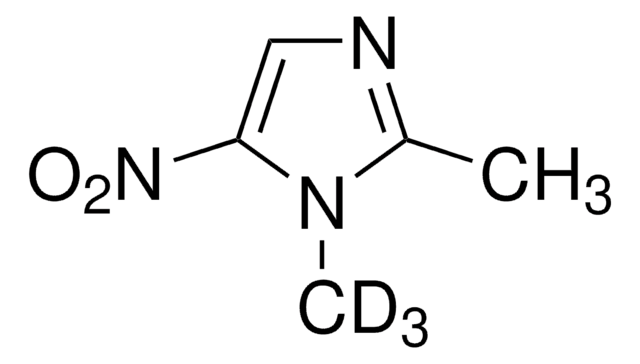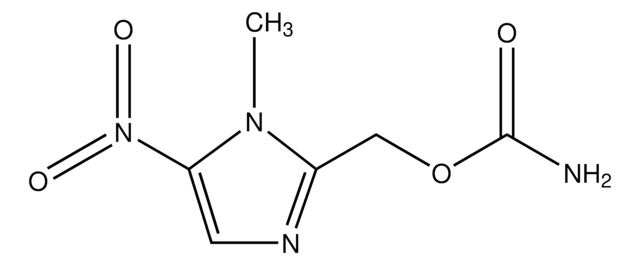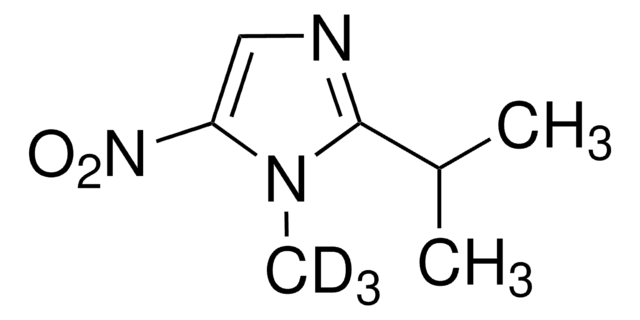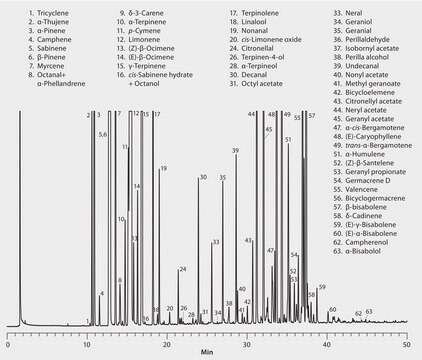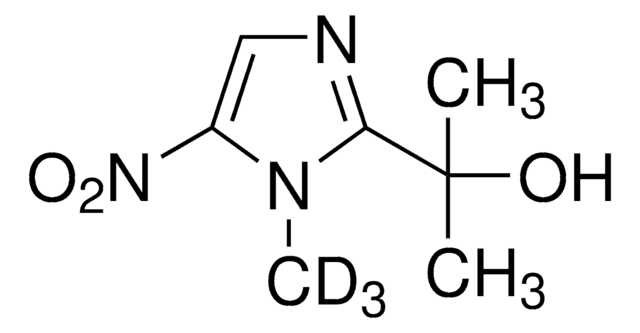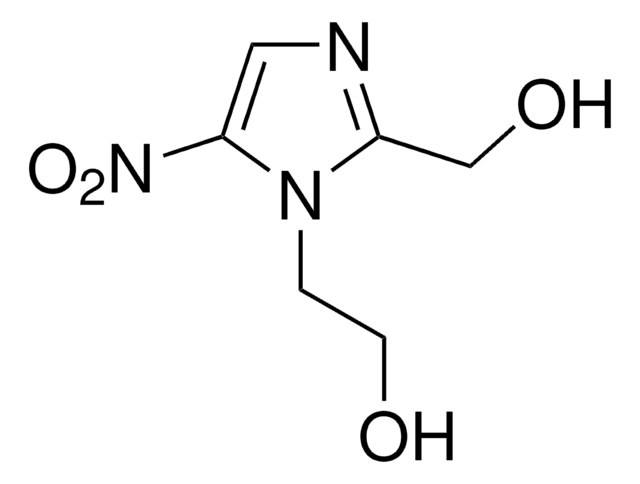34217
Ronidazole-d3
VETRANAL®, analytical standard
Sinónimos:
2-(Carbamoyloxymethyl)-1-methyl-d3-5-nitro-imidazole
About This Item
Productos recomendados
grado
analytical standard
Nivel de calidad
Línea del producto
VETRANAL®
caducidad
limited shelf life, expiry date on the label
técnicas
HPLC: suitable
gas chromatography (GC): suitable
aplicaciones
clinical testing
Formato
neat
cambio de masa
M+3
cadena SMILES
[2H]C([2H])([2H])n1c(COC(N)=O)ncc1[N+]([O-])=O
InChI
1S/C6H8N4O4/c1-9-4(3-14-6(7)11)8-2-5(9)10(12)13/h2H,3H2,1H3,(H2,7,11)/i1D3
Clave InChI
PQFRTXSWDXZRRS-FIBGUPNXSA-N
Aplicación
Información legal
Código de clase de almacenamiento
11 - Combustible Solids
Clase de riesgo para el agua (WGK)
WGK 2
Equipo de protección personal
Eyeshields, Gloves, type N95 (US)
Elija entre una de las versiones más recientes:
¿Ya tiene este producto?
Encuentre la documentación para los productos que ha comprado recientemente en la Biblioteca de documentos.
Nuestro equipo de científicos tiene experiencia en todas las áreas de investigación: Ciencias de la vida, Ciencia de los materiales, Síntesis química, Cromatografía, Analítica y muchas otras.
Póngase en contacto con el Servicio técnico